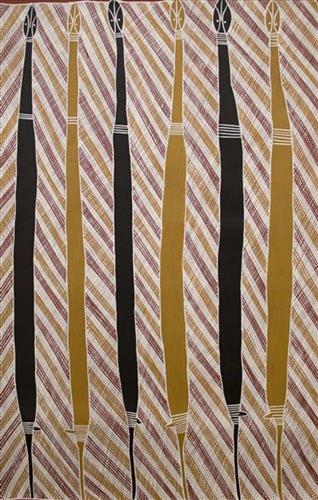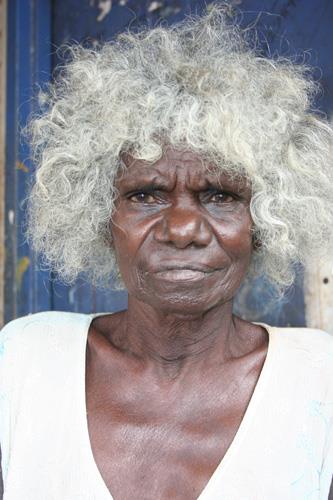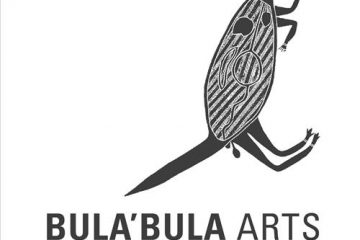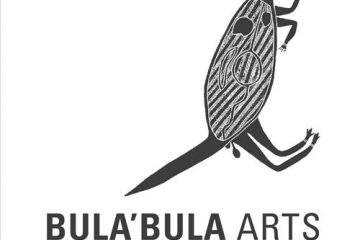Biography:
Djunginy was born in 1947 to father, acclaimed artist, Ngulmarmar and sister to artists George Milpurrurru and Charlie Djurritjni.
Djunginy is renowned for her contribution to Contemporary Indigenous Art, being one of the first Ramingining women to showcase her weaving skills on a global scale.
Djunginy was best known for her pandanus dyed woven bottles and painted bottle form which has been the predominate motif throughout Djunginy’s work. The inspiration for this motif arose while living at Mulgurrum outstation, where several Italian Chianti bottles existed in the community. Encouraged to weave these bottles by then art curator of Bula’Bula Arts Djon Mundine, Djuniny’s bottles were soon acquired by many public institutions and private collections.
The bottle motif is also in reference to Djunginy’s mother’s group the Marrangu Djinang, where the bottles, shaped like beehives, represent the honey story in Ramingining, Central Arnhem Land. In contrast, the woven bottle motif is also representative to the use and misuse of alcohol in all communities, remote and urban.
Djunginy’s bottle motif is also depicted in painted form, however, the painted bottles were representations of the swampland in Ramingining, with the bottles referencing bark canoes gliding through the swamp water, and painted in traditional rarrk design.
Djunginy’s first exhibition was held in 1983 at the George Paton Gallery, Melbourne. Successfully aweing the audience with the detail and colour of the woven bottles, her bottles were then featured in the 1998 Sydney Biennale, showcasing Indigenous weaving as Contemporary Art.
Djunginy won the National NAIDOC 2011 Artist of the Year Award. Djunginy was commissioned for the 2013 Exhibition String Theory: Focus on Contemporary Art, held at the Museum of Contemporary Art, Sydney, NSW for her woven bottles. The show received rave reviews from the public and critics alike.
Djunginy created a single Dupan (Hollow Log) for the 1988 Aboriginal Memorial, an installation of over 200 Dupan commemorating the deaths of indigenous people since white occupation. The Aboriginal Memorial installation was initially exhibited at the Biennial of Sydney-Beneath the Southern Cross, before moving to the National Gallery of Australia in Canberra, where it is on permanent display.
Djunginy has experienced great success both nationally and internationally. With over 30 group exhibitions, and work in numerous public and private collections, Djunginy’s works remain highly collectible.




